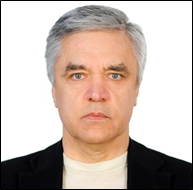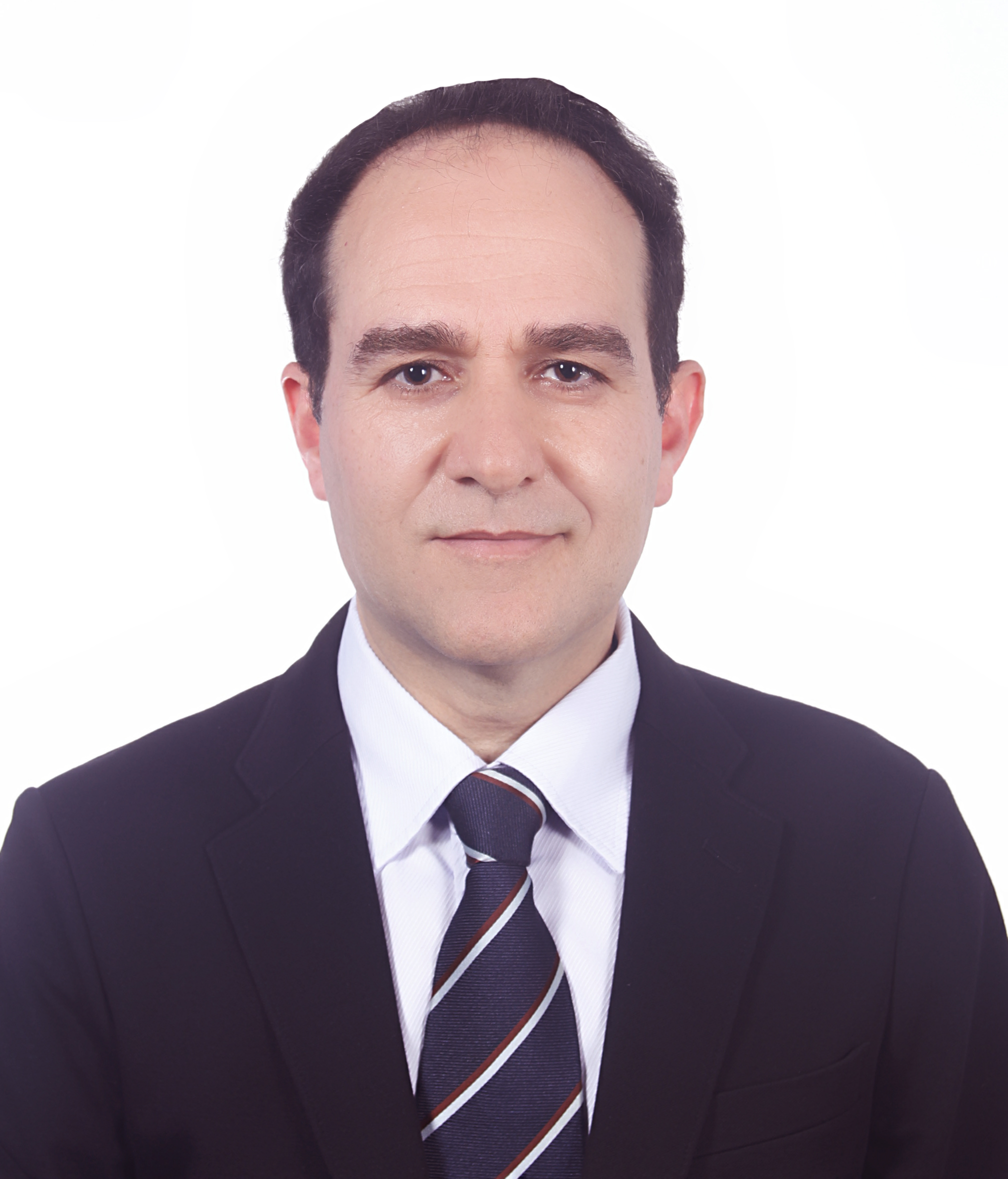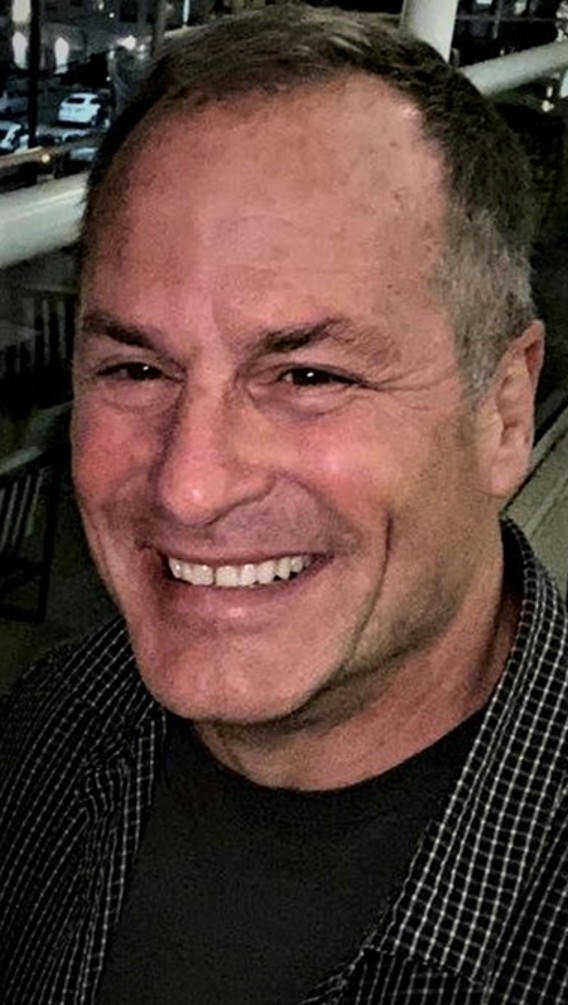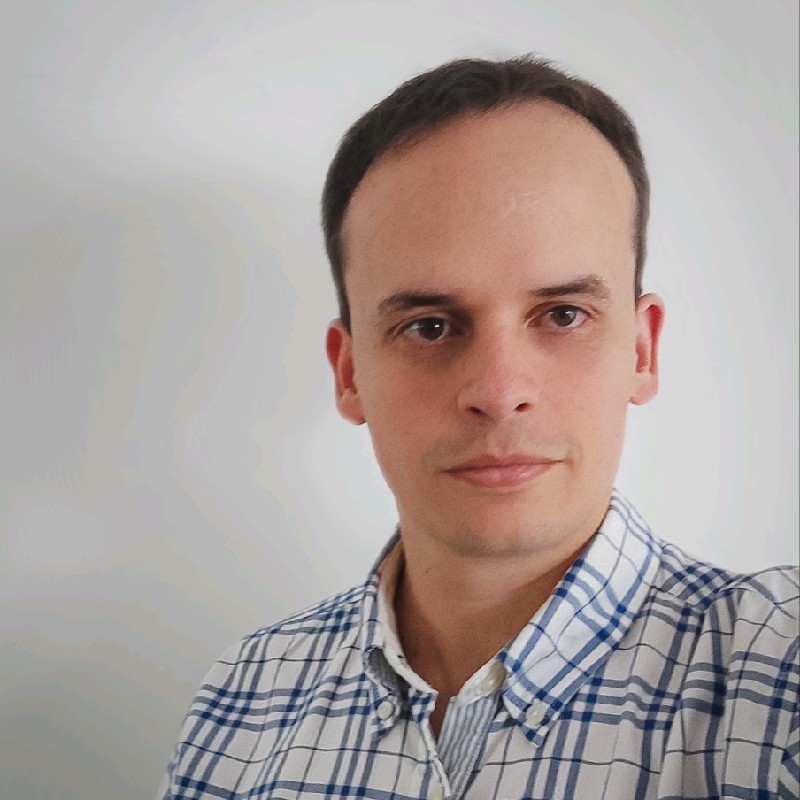
Title: Are The Vaccines We Use on These Days Safe for Our Patients?
Keynote speaker presentation
Huang Wei Ling
Medical Acupuncture and Pain Management Clinic, Brazil
Abstract
In 1796, Dr Edward Jenner discover how to immunize children from small pox inoculating a cowpox sore on the hand of milkmaid. Many of different vaccines were created with this some thought until today. The purpose of this study is to demonstrate that this highly concentrated vaccine is not adequate to the type of population that we are presenting nowadays considered immunodeficient due to energy deficiency condition of the five internal massive organs of the five elements theory of traditional Chinese medicine (Liver, Heart, Spleen, Lungs and Kidney) caused by the chronic exposition to the electromagnetic radiation after the modernization of telecommunication. The use of highly diluted products is the safes method on these days due to this alteration in the energy level. Methods: one case report of 36 years-old female patient, nurse, she received three doses of the COVID-19 vaccine to be admitted in a new job. After two weeks after the third dose, her D-Dimer was three times the normal value (above 1500 mg/dl). She also received measurement of the energy of her five internal massive organs energy using radiesthesia procedure. Results: all her internal massive organs were at the lowest level of energy, rated one out of eight. The treatment of her condition was using highly diluted medications according to the theory of Constitutional Homeopathy of the Five Elements Based on Traditional Chinese Medicine and crystal-based medications to replenish the energy of these organs. After one month, she needs to receive the remainder of the vaccines that were delayed, which were the tetanus, diphtheria, and hepatitis B vaccines. After two weeks of this vaccination, more increase in D-dimer occurred (to more than 3000 mg/dl). The conclusion of this study is to demonstrate that the use of any kind of highly concentrated vaccines is having the potential to do thrombosis and it is not safe . The use of highly diluted products to be used in the prevention of infectious disease is the safest option in this new type of population that we are presenting nowadays, due to this energy deficiency condition presented by them in this modern world.
Biography
Huang Wei Ling, born in Taiwan, raised and graduated in medicine in Brazil, specialist in infectious and parasitic diseases, a General Practitioner and Parenteral and Enteral Medical Nutrition Therapist. Once in charge of the Hospital Infection Control Service of the City of Franca’s General Hospital, she was responsible for the control of all prescribed antimicrobial medication and received an award for the best paper presented at the Brazilian Hospital Infection Control Congress in 1998. Since 1997, she works with the approach and treatment of all chronic diseases in a holistic way, with treatment guided through the teachings of Traditional Chinese Medicine and Hippocrates. Researcher in the University of São Paulo, in the Ophthalmology department from 2012 to 2013.Author of the theory Constitutional Homeopathy of the Five Elements Based on Traditional Chinese Medicine. Author of more than 100 publications about treatment of variety of diseases rebalancing the internal energy using Hippocrates thoughts.

Title: The Power of Cultural Validation: A Global Approach to Vaccines
Keynote speaker presentation
Julissa Soto
Public Health Advocate, Julissa Soto Consulting
Abstract
Colorado is home to some of the most amazing health and public health providers. Yet, Latino communities, new immigrants, refugees, people with disabilities, LGBTQ+ communities and other underserved populations continue to face barriers to accessing health and public health services which result in significant disparities in health and public health outcomes. In some cases, these barriers and the lack of community trust in the health and public health systems are mistaken for “hesitancy” or a community’s “refusal” to participate. In reality, there is a disconnect between providers and the communities they are seeking to serve that can be overcome with the right approach.
Methods:
The Power of Cultural Validation is an intervention approach that breaks down barriers to access, increases trust in health and public health systems, reduces disparities, and enables agencies and providers to reach their public health goals by utilizing genuine relationships, meeting communities where they are, and communicating in ways that are relevant to the intended populations.
Results:
The training illustrates how implementing Cultural Validation practices results in reducing and eliminating disparities and achieving desired public health outcome goals. Participants will be provided with specific case examples including “Vaccine Sundays”, “One School, One Vaccine at a Time,” and partnerships with local business that demonstrate how implementing Cultural Validation led to the vaccination of more than 30,000 Latino adults, youth and children, as well as the distribution of more than 180,000 COVID-19 tests and 90,000 masks during the COVID-19 Pandemic.
Implications:
As a result of this training, participants will be able to justify the value of Cultural Validation in achieving health and public health outcomes. Participants will receive rationale and concrete steps to take action a and implement Cultural Validation practices in their own agencies, and their efforts to eliminate disparities and effectively engage underserved and marginalized communities.
Training Description
Colorado is home to some of the most amazing health and public health providers. Yet, health disparities continue to exist for Latino communities, new immigrants, refugees, people with disabilities, LGBTQ+ communities and other underserved populations. The Power of Cultural Validation empowers providers with concrete steps to connect with communities and take action to break down barriers, reduce disparities and achieve desired health and public health outcomes. Participants will be presented with real case examples that demonstrate the success of Cultural Validation, and receive instructions so that can incorporate Cultural Validation into their new or existing programs.
Skill Level: Intermediate
Foundational: Partnerships, Health Equity and the Social Determinants of Health, Communicable Disease Prevention, Investigation and Control, Environmental Public Health, Access to and Linkage with Health Care
Biography
Julissa Soto has dedicated her career to being a leading advocate for Latino immigrant equality, inclusion and health equity in Colorado and throughout the nation. From working with teen parent programs and serving on the Colorado Vaccine Equity Task Force, to promoting health equity at the American Diabetes Association, Soto has pioneered a wide range of programming designed to empower marginalized communities. Her advocacy efforts have appeared in publications throughout Colorado, as well as NPR, Time magazine, the American Public Health Association’s Public Health, Religion and Spirituality Bulletin, and a new documentary from the Colorado Cross-Disability Coalition. Julissa’s success in leading and managing evidence-based prevention programs has been recognized at both the state and national levels. She received a best practices award from the U.S. Centers for Disease Control, and in 2021, her innovative programming and community-based intervention strategies earned one of Colorado’s most prestigious honors when Colorado Governor Jared Polis proclaimed September 20, 2021 as “Julissa Soto Day”. Today, Julissa is proud to continue to provide consulting and education services to partners and agencies throughout Colorado and the United States as CEO and founder of Julissa Soto Latino Health Equity Consulting. She serves on the Health Equity Commission for the Colorado Department of Public Health and is the Diversity, Equity and Inclusion Co-Chair of the Regional Accountable Entity (RAE) Program Improvement Advisory Committee (PIAC), which provides guidance on health equity and outcomes. She also serves on the Suicide Prevention Commission for Colorado representing the voices of suicide attempt survivors – and particularly those facing multiple disparities. As a member of the Vaccine Community Advisory Board, Julissa contributes to research at the University of Colorado and Childrens Hospital by advising research recruitment efforts, connecting staff to community organizations, participating in discussions about vaccine and COVID treatment, and advocating for inclusive research practices. At the national level, Julissa currently serves on the United States Substance Abuse and Mental Health Services Administration (SAMHSA)’s National Network to Eliminate Disparities in Behavioral Health (NNED) steering committee. She also serves as a Cultural Advisory Board member for Vaccinate Your Family, a national nonprofit organization that strives to protect people of all ages from vaccine-preventable diseases. In this role, she shares her extensive health equity expertise to aid in the development of outreach plans to increase pediatric COVID vaccine uptake in marginalized communities. In addition, Julissa is an active member of the National Hispanic Medical Association and serves on the KIPP Colorado Public Schools Board of Directors. In 2022, Julissa became a member of the Legislative Leadership Network for the Colorado Catholic Conference, where she combines her faith and health equity advocacy. In her spare time, Julissa is proud to partner with Young Invincibles as a mentor empowering young adults to enhance their voices, impact and economic opportunities. She also serves as a board member for Colorado Migrant Rural Coalition (CMRC), where she advocates for healthy equity and economic justice. Learning Objectives: • Learners will be able to explain and justify the importance of Cultural Validation in their health and public health approaches. • Learners will be able to apply lessons learned to create their own effective community engagement programs.

Title: Unlightned points on the role of gender medicine on the metabolism of drugs for chronic heart failure treatment
Speaker presentation
Tiziana Ciarambino
Internal Medicine Department, Hospital of Marcianise, ASL Caserta, Italy
Abstract
Heart failure therapy nowadays consists of a composition of drugs that act synergistically with each other Angiotensin-converting enzyme inhibitors (ACEI) or angiotensin II receptor antagonists (ARB) or angiotensin II receptor antagonists and neprilysin (ARNI), Beta-blockers, Diuretics: They reduce fluid load and Mineralocorticoid antagonists (such as spironolactone). Gender differences in the pharmacokinetics and pharmacodynamics of chronic heart failure drugs are being studied, but research in this field is still relatively limited. Gender differences in ARNI pharmacokinetics have not been fully established. However, there may be some variations in drug clearance between men and women. Some studies have suggested that women may have lower clearance of some ARNI components than men, but definitive evidence is still being studied. There is no clear evidence of gender differences in the direct physiological response to ARNI. Some studies have suggested that women may have lower clearance of beta-blockers than men, which could lead to greater systemic exposure to the drugs in women. Some studies have suggested that women may be more sensitive to the hypotensive effects of beta-blockers than men. This may be due to differences in adrenergic receptors or mechanisms regulating vascular tone between the sexes. Additionally, women may have an increased risk of side effects such as bradycardia, bronchospasm, and cardiac depression when treated with beta-blockers. Spironolactone has greater bioavailability in women than men, but there is no direct evidence of gender differences in the physiological response to it. Nothing is yet known about the drug-specific gender differences of sodium-glucose cotransporter 2 (SGLT2) inhibitors, loop diuretics, and ACE inhibitors or sartans. This review aims to shed light on any gender differences in the metabolism and action of these drugs to better optimize the therapeutic and titration schemes of these drugs, as well as better control any side effects that result from their use.
Biography

Title: Personalized and Precision Medicine (PPM) as a Unique Healthcare Model to Be Set Up via Translational Applications and Upgraded Business Modeling to Secure the Human Healthcare, Wellness and Biosafety: The Next-Step Vaccinomics on the Way to Move Ahead
Keynote speaker presentation
Dr. Sergey Suchkov
The Russian University of Medicine, Moscow, Russia
Abstract
A new systems approach to diseased states and wellness result in a new branch in the healthcare services, namely, personalized and precision medicine (PPM). To achieve the implementation of PPM concept, it is necessary to create a fundamentally new strategy based upon the subclinical recognition of biomarkers of hidden abnormalities long before the disease clinically manifests itself.
Each decision-maker values the impact of their decision to use PPM on their own budget and well-being, which may not necessarily be optimal for society as a whole. It would be extremely useful to integrate data harvesting from different databanks for applications such as prediction and personalization of further treatment to thus provide more tailored measures for the patients resulting in improved patient outcomes, reduced adverse events, and more cost effective use of the latest health care resources including diagnostic (companion ones), preventive and therapeutic (targeted molecular and cellular) etc.
In this connection, the field of PPM-based vaccinology remains empirical in many respects but combines next-generation diagnostics with state-of-the-art manufacturing to create a herd-specific, custom vaccine to help physicians prevent disease. PPM-based vaccinologyfocuses on continuous improvement in herd health by seeking solutions for ongoing and emerging disease challenges. The new fields of vaccinomics provide models that permit global profiling of the innate, humoral, and cellular immune responses integrated at a systems biology, PPM and translational medicine levels. This knowledge is being utilized to better understand the following: identifying who is at risk for which infections; the level of risk that exists regarding poor immunogenicity and/or serious adverse events; and the type or dose of vaccine needed to fully protect an individual.
PPM and systems vaccinology are becoming a valuable tool in the vaccine development whilst prompting application of systems vaccinology for investigating complex pathogens or oncogenes to get the vaccines of the next-step generation made. These promising changes call for the inclusion of systems vaccinology as early as possible in the vaccine development chain to better understand why some vaccines work and others do not. This will enable efficiency of vaccine development proportionally in the design phase and will lead to improved vaccine evaluation in early phases, thereby reducing time and costs.
Meanwhile, a lack of medical guidelines has been identified by responders as the predominant barrier for PPM adoption, indicating a need for the development of best practices and guidelines to support the implementation of PPM! This is the reason for developing global scientific, clinical, social, and educational projects in the area of PPM to elicit the content of the new branch.
Biography
Sergey Suchkov was born in the City of Astrakhan, Russia, in a family of dynasty medical doctors. In 1980, graduated from Astrakhan State Medical University and was awarded with MD. In 1985, Suchkov maintained his PhD as a PhD student of the I.M. Sechenov Moscow Medical Academy and Institute of Medical Enzymology. In 2001, Suchkov maintained his Doctor Degree at the National Institute of Immunology, Russia. From 1989 through 1995, Dr Suchkov was being a Head of the Lab of Clinical Immunology, Helmholtz Eye Research Institute in Moscow. From 1995 through 2004 - a Chair of the Dept for Clinical Immunology, Moscow Clinical Research Institute (MONIKI). In 1993-1996, Dr Suchkov was a Secretary-in-Chief of the Editorial Board, Biomedical Science, an international journal published jointly by the USSR Academy of Sciences and the Royal Society of Chemistry, UK. At present, Dr Sergey Suchkov, MD, PhD, is: ● Professor, The Russian University of Medicine, Moscow, Russia ● The Russian Academy of Natural Sciences, Moscow, Russia ● New Academy of Sciences, USA ● Secretary General, United Cultural Convention (UCC), Cambridge, UK. Dr Suchkov is a member of the: ● American Chemical Society (ACS), USA; ● American Heart Association (AHA), USA; ● European Association for Medical Education (AMEE), Dundee, UK; ● EPMA (European Association for Predictive, Preventive and Personalized Medicine), Brussels, EU; ● ARVO (American Association for Research in Vision and Ophthalmology); ● ISER (International Society for Eye Research); ● Personalized Medicine Coalition (PMC), Washington, DC, USA

Title: Artificial Intelligence (AI) in Biomedical Engineering
Keynote speaker presentation
Dr. Hossein Hosseinkhani
Innovation Center for Advanced Technology, Matrix HT, Inc., New York, USA
Abstract
Application of Artificial intelligence (AI) in biomedical engineering technology is rapidly under development. The way AI applies in biomedical science is as the same as natural living cells consider playing the critical rules in their extracellular matrix environment. The present seminar is divided into two parts; in the first part I will discuss the basic principle of the AI technology. In the second part, I will discuss the recent applications of AI technology in healthcare. I will further show some of our recent project in which AI technology has been used in biomedical engineering including in cancer, diabetes, biosensor, and tissue engineering.
Biography
Dr. Hossein Hosseinkhani, Biomedical Engineer, has 30 years of experience in biomedical engineering in both academia and industry in biomedical engineering research and development, which includes several years of basic science research experience in a number of premier institutions related to the structure and function of biomaterials, and in polymer-based medical implants development in the medical device industry. He is inventor of 22 International patents, several of which are licensed to companies acting in the biomedical fields and translated to 7 commercial products. He authored more than 100 scientific papers published on peer-reviewed Journals, 5 books (H-index: 49 Google Scholar). He is the founder of Matrix HT, Inc. a world leading biotech company dedicated to healthcare technology to improve patient's quality of life.

Title: Vaccine Safety Monitoring – Separating Fact from Fiction
Plenary speaker presentation
Dr. Graeme Ladds
PharSafer, UK.
Abstract
Unlike conventional medicines and clinical programmes designed to treat disease where improvement in patients is seen quickly as a demonstration of efficacy and safety, vaccines present a unique set of problems that require application of the well-known phrase ‘Primum Non Nocere’ simply because our vaccines will be largely administered to healthy individuals - usually in large numbers of patients where we are measuring prevention as efficacy rather than improvement and what is tolerable for ‘risk’ when the patient has not been ill.
For centuries when the first vaccines were produced there has been many misconceptions concerning the safety of a medicine that prevents rather than cures.
To allay these fears, it is vital to demonstrate a simple, effective mechanism of pharmacovigilance/safety monitoring that can identify real safety issues, quickly and where appropriate implement risk minimisation activities to ensure maximum patient benefit and reduced and contained risk.
All of this may need to be performed against a backdrop of mass vaccinations covering many geographies over a short period of time where high levels of patient exposures means that the need to assess potential safety issues quickly is of paramount importance.
The aim of this talk is to look at innovative and practical methods of capturing adverse event data from vaccines allowing prompt and critical decision making in assessing potential safety problems to ensure patient safety and maximising benefits to the patient populations.
Biography
Dr Graeme Ladds has a first degree in Biochemistry & Pharmacology with a PhD in Drug Metabolism and Pharmacokinetics. He has worked in Global Pharmacovigilance for nearly 35 years and has taken many products from Bench to Post-Marketing looking after both the safety aspects and Medical aspects. He has served in Senior positions in a number of Global Pharma Companies and has owned his own Global CRO, PharSafer, for the last 20 years.

Title: How to Vaccinate a Mosquito: A New Approach To Reducing the spread of Pathogenic Viruses.
Plenary speaker presentation
Dr. Richard Anthony
Founder and President at STI and Vacunax Inc, United States
Abstract
Vaccination intervention approaches to mosquito borne Alphavirus and Flavivirus (e.g. Dengue virus, Yellow Fever, Chikungunya virus, and Zika virus) pathogens are expensive and logistically challenging, especially for the equatorial low- and middle-income countries (LMIC) where they are endemic. To stop the spread of these diseases, we must first recognize that mosquitoes are not the problem; the problem is the pathogenic forms of the viruses they carry. To address the problem, Vacunax Inc has identified the phylogenetic information that codes for key structural elements of the Arbovirus envelope proteins that evolved for virus replication in both invertebrate and vertebrate cells. By genetically deleting large amino acid sequences in the envelope proteins, we have genetically forced regression of Arboviruses to their invertebrate origins. This approach was used to produce Host Restricted-Live Attenuated Vaccine (HR-LAV) strains of Dengue virus and Chikungunya virus which grow efficiently in insects but produces transmission defective, non-pathogenic particles in Mammals which are unable to revert to the wildtype pathogen. The HR-LAV strains can be persistently infected (PI) in the mosquito populations and sustained both vertically and horizontally in the mosquitoes’ lifecycle, thereby creating non-pathogenic strain carrier population. Interestingly, persistently infected mosquitoes are “immune” to a second infecting virus of the same family, a phenomenon known as “superinfection exclusion” (SIE). If our in-vitro SIE results presented here can be replicated in whole mosquitoes, “vaccinated” PI mosquito populations can provide a SIE barrier that would prevent the transmission of the pathogenic Alphaviruses and Flaviviruses by mosquitoes in the wild.
Biography
Richard Anthony PhD, Founder and President of Vacunax Inc. He holds a PhD in microbiology, from University of Texas, Austin. Dr. Anthony has founded several successful ventures including Catalyst Pharmaceutical Research LLC (CRO), Topica Pharmaceuticals Inc (pharmaceutical company) and Surgical Training Institute LLC (medical education company).

Title: Cross-protective immunity of chimeric VP2 and NS1 antigens against several serotypes of African Horse Sickness virus.
Keynote speaker presentation
Dr. EVA CALVO PINILLA
Animal Health Research Center (CISA), Spain
Abstract
African horse sickness (AHS) is one of the most lethal viral diseases that affect equids, which could reach a mortality rate of 90% in horses. AHS virus (AHSV) is transmitted between equid hosts by the bite of Culicoides midges and the major vector C. imicola is distributed worldwide. Nine different serotypes have been described so far with scarce cross-reactivity. Among proteins, VP2 is the main target of neutralizing antibodies, with low cross-reactivity since VP2 protein is highly variable. As cross-protective immune responses are crucial in the control of this virus, therefore main objectives of this research is to develop recombinant MVA (Modified Vaccinia Ankara) vector expressing a chimeric AHSV VP2 protein carrying the conserved central domain of other serotypes in order to increase protective immunity against heterologous AHSV. In addition, dual MVA expression vector encoding also the conserved non-structural NS1 protein has been under evaluation in order to trigger broad immune responses capable to confer protection in the mouse model against the infection with different AHSV serotypes.
Biography
Dr. Eva Calvo-Pinilla works as a researcher at Centro de Investigación en Sanidad Animal (CISA) that belongs to Consejo Superior de Investigaciones Científicas (CSIC) in Spain. She received a Master's degree in Molecular Biology from Autonomous University of Madrid, and completed her PhD at the same University. She also holds a Master's degree in Education from Complutense University of Madrid. She received a pre-doctoral fellowship for PhD studies and then move to The Pirbright Institute, UK, to work as post-doctoral fellow for three years. She awared a competitive post-doctoral fellowship “Juan de la Cierva” and currently she is Tenured Scientist at CISA, Immunoprophilaxis of Arboviruses department. Her main expertise relies in immune studies of Orbiviruses among other viruses, and the generation of recombinant vaccines using different methodologies. Currently she is mainly focused on the study of control strategies against African horse sickness virus and Epizootic Hemorrhagic disease. She has been involved in international and national projects related with Crimean-Congo hemorrhagic fever, Rift Valley fever, Bluetongue virus and Sars-CoV-2, in the evaluation of immune responses of vaccine candidates and the efficacy of antiviral compounds. She has published 35 peer-reviewed articles in relevant SCI indexed journals, and presented her works in 42 national and international meetings. She also supervises master students and undergraduate student research projects.

Title: Immunological Effects of Autohemo vaccination and Autogenous Vaccination in Bovine with Cutaneous Papillomatosis.
Speaker presentation
Dr. Andrés Suárez Usbeck
Head of Livestock Scientific Direction, Ecuador
Abstract
Papillomavirus is a viral pathogen known to instigate the development of benign tumors in mammalian hosts. Various therapeutic approaches exist for managing cutaneous papilloma resulting from bovine papillomavirus (BPV). Auto hemo vaccine (AHV), and autogenous vaccine (ATV) stand as one such methods. The aim of this research was to scrutinize the immunological effects of AHV and ATV in cattle in Ecuador. 150 cattle with symptoms of cutaneous papillomavirus were diagnosed using PCR and distributed among different groups. To create the vaccines, 25 animals were inoculated with 20 mL of the AHV and 25 animals were inoculated with 10 mL of AHV. For the ATV protocol, vaccines were prepared by adding 0.5% formalin to the suspension, which was topped up by crystal penicillin. As with the previous protocol, 25 animals were inoculated with 20 mL of ATV vaccine and 25 animals with 10 mL, while the remaining subjects (50 animals) will serve as positive control group (C+). The vaccines were stored at 4°C until used. Vaccines (AHV & ATV) were administered at the aforementioned dosages 4 times subcutaneously at 1-week intervals Hematological and immunological analyses were performed by collecting the blood samples before and after each vaccination. The findings demonstrated in ATV (10 and 20 mL) and AHV (10 and 20 mL) a notable surge in leukocyte (14.5; 14; 15.4; 16 103 /mm3 ), lymphocyte (55; 52; 58; 62 %), Neutrophil (33; 35; 44; 40%) and Monocyte (5; 8; 12; 13 %) and interleukin-6 (0.85; 0.80; 0.95; 0.97 ng/L), compared with C+ (Leu: 13 103 /mm3 ; Lym: 50 %; IL-6: 0.54 ng/L; Neu: 34%; Mon: 6.5%). In AHV and ATV, encouragingly, within the first month post-vaccination, signs of regression in cutaneous papilloma became evident. As a conclusion, bovine papillomatosis represents a condition of considerable economic significance within the domain of dairy farming. The study underscores autogenous vaccination as a pragmatic therapeutic intervention, effectively prompting lesion regression, particularly through the stimulation of IL-6 and lymphocyte production in cattle infected with papillomavirus.
Biography
Will be updated soon...

Title: CRISPR-CAS9 BASED VACCINES
Speaker presentation
Elijah Luken
Federal University Wukari, Nigeria
Abstract
CRISPR Cas9 is gradually becoming a lifeline in healthcare and medical practice, the approval of the first CRISPR based therapy by the US FDA some months ago attests to this. Vaccine development is indeed a difficult, complex and highly expensive and time consuming. Less than one in every fifteen vaccine candidates achieve licensure. The high rate of disease outbreaks and pandemics requires a correlative increase in the availability and timely production of vaccines. CRISPR Cas9 provides a high throughput and efficient vaccine development system.
Target product profile: A CRISPR Cas9 based vaccine capable of identifying and detecting genomes of infective agents and possession of an effective endonuclease that initiate cuts thereby destroying causative organisms.
The following points are being strictly considered:
1. Isolation of the causative organism and an extensive study and sequencing of its genome.
2. Identification of unique sequences (nucleotides) in the causative organism's genome which do not correlate to any in the human genome(to prevent off target edits)
3. A system for identifying this unique sequence (similar to the guide RNA) coupled with a potent endonuclease.
In cases where a unique nucleotides sequence cannot be found, a genome sparing mechanism is built to protect the human genome from destruction by the endonuclease.
Prophylactic CRISPR modelled vaccines could also be developed and administered to healthy humans. In this method, the endonuclease must be inactivated(like dead Cas9) until the body is exposed to the infectious agent.
The urgency to develop potent vaccines is Keen to infectious disease as that may be the only way to limit spread and decrease mortality. This has deepened research and geared up the search for an effective antidote and CRISPR Cas9 holds a promising antidote.
Biography
Will be updated soon...

Title: Paracetamol is the most unscientific and dangerous drug for fever. Anyone can create a fever within hours using antipyretic objects
Speaker presentation
Yacob Mathai Kunnathazhath
Marma Health Centre, India
Abstract
Most people mistake fever for high temperature and think it is dangerous and take paracetamol to reduce temperature as fever is determined by checking temperature.
A high temperature is not a fever, but hyperthermia, which is the opposite of fever.The only cause of fever is inflammation. But hyperthermia is high heat. We can create a fever within a few hours by antipyretics. It cannot cause hyperthermia. Hyperthermia can be created within seconds by using hot objects.
Hot objects of the same temperature as fever or heat-producing substances cannot cause fever in any living being. Antipyretics cause prolonged infection, which increases disease and death. Paracetamol is an antipyretic drug.
Decreased blood flow due to severe inflammation is the sole trigger for fever. Any substance that is cooling or reducing temperature (antipyretic) is a fever stimulant because it increases inflammation and reduces blood flow. Antipyretics are the only substances needed to induce fever in any organism. Antipyretic fever treatment never reduces inflammation but increases it.
A decrease in temperature is not enough to reduce the fever, all substances and their functions, which only increase and decrease during fever, must return to the state they were in when there was no fever.
Any warm or heat-increasing substance (pyretic) is a fever reducer because it reduces inflammation and increases blood flow. Pyretics are therefore the only substances necessary to cure fever in any organism.
Any warm or heat-increasing substance (pyretic) is a fever reducer because it reduces inflammation and increases blood flow. Pyretics are therefore the only substances necessary to cure fever in any organism.
There is a fundamental contrast between the basic action of fever and the basic action of paracetamol. The essence of today's fever treatment is fever can be cured by using fever-creating substances.
A feverish temperature works against lack of blood flow and it increases blood flow.
Paracetamol is given to reduce prostaglandin E2. It is not a fever-causing substance. It has hyperthermic and anti-inflammatory properties. It is more abundant after the inflammation in the body. From this, the immune system produces prostaglandin E2, which reduces inflammation and increases blood flow to the body or organ, making the body healthier and live longer
ProstaglandinE2 is found in the body during fever, similar to the airbag used to protect passengers in a car accident. Paracetamol is given to the patient to eliminate the prostaglandin E2 found in fever, just as those who do not know the purpose of an airbag in a car accident disable it thinking that someone will die in a serious accident because of the airbag. As a result, the body swells, blood flow decreases and the patient dies.
The medical book states that paracetamol may cause fever, neutropenia, thrombocytopenia, nephropathy, and skin reactions 1. This is not a side effect of paracetamol, but its proper function.
Paracetamol is given again to relieve the fever caused by taking paracetamol. If it is said that the medicine used to reduce the temperature of the fever itself causes the fever, the scientific and authenticity of that medicine are being questioned here. There is no science or technology like this anywhere in the world.
Researchers have found that even a single dose of paracetamol can reduce the levels of glutathione, a chemical in the body that reduces inflammation2. Yet paracetamol is classified as an anti-inflammatory.
Paracetamol destroys all the protective substances our immune system makes when we get sick. It decreases prostaglandinE2, Glutathione, interferon, platelets, WBC, etc,…
If the fever temperature is reduced by giving paracetamol, substances produced only during fever will increase. Paracetamol does not reduce fever, the cause of fever, morbidity, or mortality, all of which are increased by paracetamol.
Even for diseases that would have cured themselves due to the action of our immune system, using paracetamol can cause inflammation, reduced blood flow, and death.
Antipyretic therapy is a necessary and appropriate treatment for hyperthermia and not for fever. No one has scientifically proven that antipyretic therapy, which reduces the heat of a fever, is an appropriate treatment for fever and inflammation.
Depletion of ProstaglandinE2 and glutathione, which reduces inflammation, can also increase inflammation. These fundamental errors have led to the treatment of fever with antipyretic agents. No such treatment or science was found even in the Stone Age.
No other illness or symptom is more unscientific than justifying the administration of paracetamol for fever. There is no one percent evidence that paracetamol increases blood flow by reducing inflammation and helping the immune system in any way. At the same time, there is 100% evidence that paracetamol increases inflammation, reduces blood flow and destroys the immune system.
Prescribing paracetamol for fever is murderous as it depletes substances such as prostaglandin E2 and glutathione which increase blood flow and sustain life.
Conflicting opinions on the effectiveness of various antipyretic treatments can be found in various journals.
Biography
A practicing physician in the field of healthcare in the state of Kerala in India for the last 35 years and very much interested in basic research. My interest is spread across the fever, inflammation and back pain. I am a writer. I already printed and published Ten books on these subjects. I wrote hundreds of articles in various magazines. I have published 11 articles on fever in various journals. After scientific studies, we have developed 8000 affirmative cross checking questions. It can explain all queries related to fever.
“ Will be updated soon...”
+91 9491 456 452
7-89-1-18, NVR LAYOUT, Madanapalle, Andhra Pradesh 517325, India
About Us
Global Scientific Guild organizes conferences and webinars to promote quality research and real world impact in an atmosphere of true international co-operation between scientists, doctors, professors, practitioners, engineers and industry by bringing together the world class renowned personalities to discuss the latest developments and innovations at one common platform.